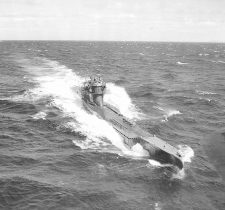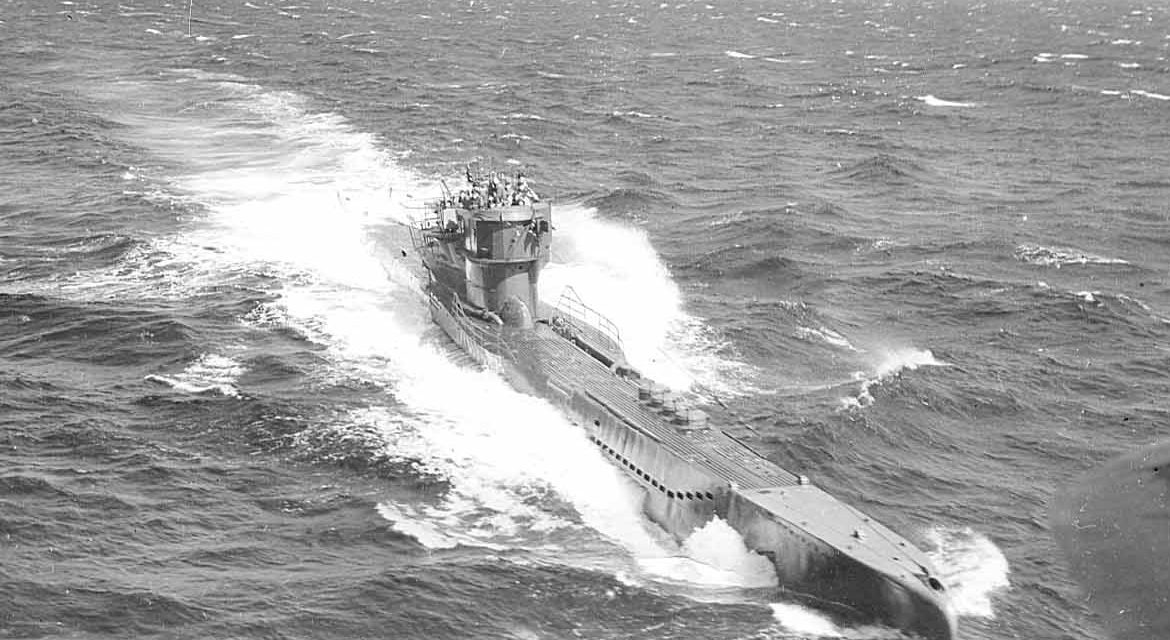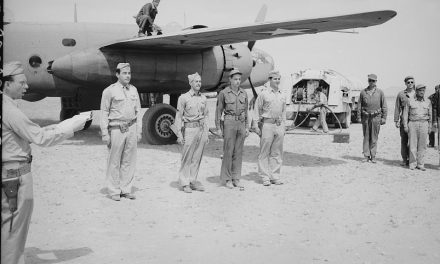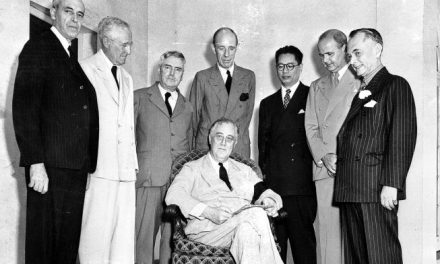It’s a merchant ship captain’s worst nightmare: a periscope eerily breaks the surface off the port bow. Not long after, a small white wake appears and there’s nothing left to do but brace for impact.
German U-Boats are back in the Atlantic and they are making things tough for ship captains trying to navigate the already dangerous ocean. The U-Boats, which once terrorized the shipping lanes between the eastern coast of America and the shores of Europe, were being scared away from attacking merchant ships once the U.S. Navy began sending Liberty Ships with the fleets.
The German submarine fleet that at one point was expected to be down to 500, according to Secretary Knox, is actually scaled down to between 300 to 400 submarines according to naval intelligence. These subs are in pens from Norway to Sicily, and it is said that Adolf Hitler can keep only one-third of the fleet in the water at the same time due to the necessity of the repairs and reloading of torpedoes.
There have been ongoing discussions between the U.S. and Great Britain pertaining to how to control the threat of the torpedoes, and although the countries are in “complete agreement,” according to a recent Navy announcement, little additional information has been released.
While it is known that the two allies have discussed who will be in charge of the anti-submarine endeavor, the Liberty ships have done a solid job protecting merchant ships. The Navy ships are well equipped to scare off the lurking sardine cans.
Consider the experience of the Liberty ship William Moultrie. On a recent voyage in the Atlantic, the Moultrie came under attack from the air and the sea. The ship’s convoy was under attack for nearly a week, with daily attacks coming from above, but an ever-dangerous threat lurking unseen beneath the surface in the shape of a U-boat.
On one of the seventh day of the trip, the Moultrie’s crew spotted a periscope on the surface and trained the guns to it, forcing it to head back under the surface. At another moment, a torpedo was spotted moving through the water toward the ship, but the quick-acting crew was able to train the guns on it, and a direct hit caused an explosion from the torpedo before it hit its mark.
The Moultrie made it to port unscathed, despite the heavy fire it came under, and also protected its fleet.
This is not the first time that a Liberty ship has helped protect a convoy, but it is certainly harrowing. No doubt there have been more instances in which Liberty ships and destroyers have aided in the protection of supply and passenger convoys.
It isn’t just the Navy, but also the Coast Guard that has been stepping up to protect the U.S. from the threat of the U-boats. Last month, the Coast Guard cutter Campbell went to drastic measures to escape the grips of a German “wolf pack” of five U-boats. Coming under fire for nearly 12 hours, the Campbell made the ultimate decision to ram one of the U-boats, before sinking it with point blank fire. In the process, a 12-foot hole opened and it was able to limp back to port.
Regardless, it appears that ships that are guarded by naval might fare much better than those that are not—just ask the 66 survivors of a British cargo ship that was sunk. They were forced to survive in lifeboats for 17 days.

A German submarine in Atlantic waters (photo from Wikimedia Commons).
Sources:
“Captain In Florida.” The New York Times (1923-Current File). March 13, 1943. Pg. 2.
“Coast Guard Ship Attacks 5 Other Subs in ‘Wolf Pack.’” The Washington Post (1923-1954). March 18, 1943. Pg. 1.
“Ship’s Gunners Hit Torpedo Coming For Her, Rout U-Boat And Shoot Down 8 Nazi Planes.” The New York Times (1923-Current File). March 21, 1943. Pg. 12.
Shallett, Sidney. “Allies Pool Resources To Win War On U-Boats.” The New York Times (1923- Current File). March 28, 1943. Pg. E5.
“66 U-Boat Victims Safe.” The New York Times (1923-Current File). March 16, 1943. Pg. 3.





